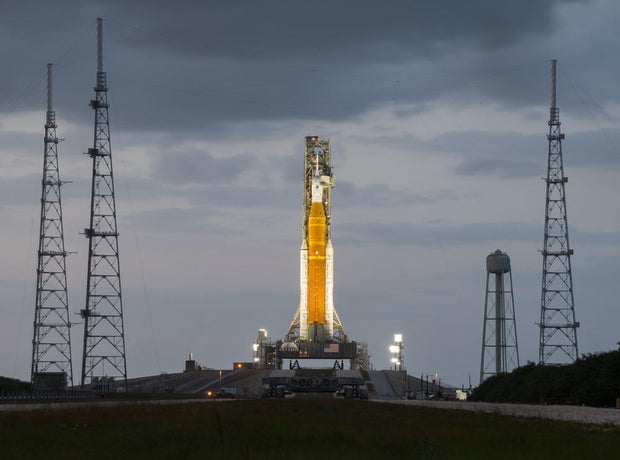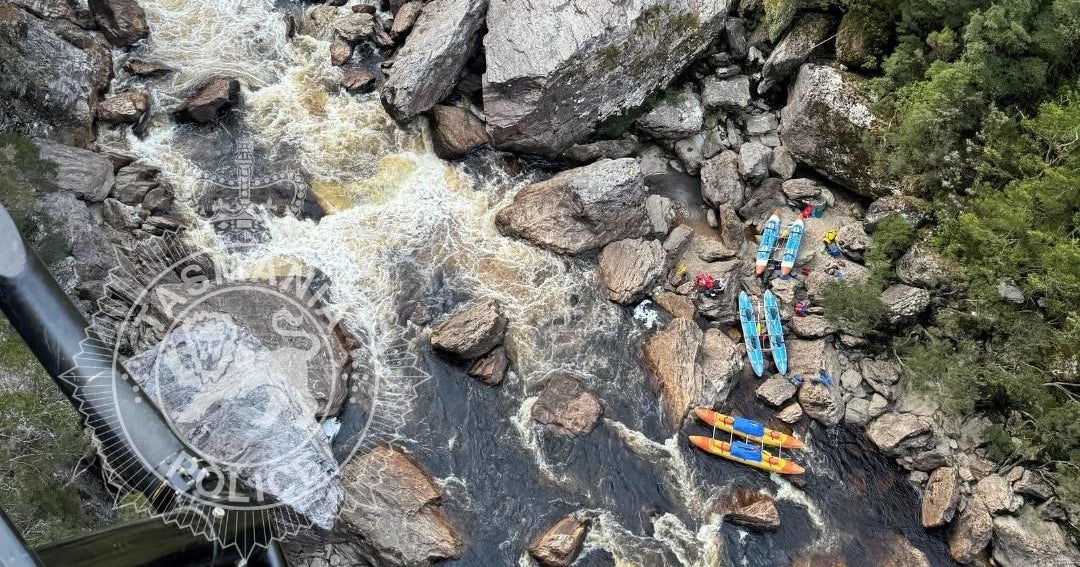NASA's repaired Artemis moon rocket ready for another fueling test
NASA plans to haul its huge Space Launch System moon rocket back to the launch pad June 5-6 for a fourth attempt to load it with 730,000 gallons of supercold propellants in a dress-rehearsal countdown to clear the way for a maiden test flight later this summer, officials said Friday.
Engineers at the Kennedy Space Center have replaced a jammed helium valve in the rocket's upper stage, tightened bolts to fix a leaky first-stage liquid hydrogen propellant feed line and carried out a variety of other maintenance tasks to ensure a successful tanking test.
At the same time, a vendor beefed up equipment at an off-side plant that feeds gaseous nitrogen to launch pads at both the Kennedy Space Center and the Cape Canaveral Space Force Station, including pad 39B where the SLS rocket will be fueled for its "wet dress rehearsal," or WDR, countdown.
"Teams have been hard at work preparing the Space Launch System rocket and the Orion spacecraft to return back to pad 39B," said Cliff Lanham, senior vehicle operations manager at the spaceport. "We're planning for that to occur on June 6 in preparation for our next wet dress rehearsal."
If all goes well, the three-day countdown will begin around June 17, leading to propellant loading and the terminal countdown no earlier than June 19.
"We have built in two weather days that could move that date around slightly," Lanham said. "Again, it is Florida in June. So thunderstorms are expected."
The Space Launch System rocket is the most powerful launcher yet built for NASA, a gargantuan two-stage booster standing 322 feet tall and tipping the scales at 5.75 million pounds when fully loaded with 730,000 gallons of liquid oxygen and hydrogen fuel.
Using a pair of extended shuttle-heritage solid-fuel strap-on boosters and four upgraded RS-25 shuttle main engines, the SLS will generate a staggering 8.8 million pounds of thrust at liftoff, eclipsing the current heavy-lift record holder, the legendary Saturn 5 that boosted Apollo astronauts to the moon.
Before NASA launches astronauts on the SLS, however, the agency first wants to stage an unpiloted test flight, using the rocket to send an Orion crew capsule on a flight beyond the moon and back.
And before doing that, engineers need to carry out a successful WDR to verify the rocket and the complex ground systems needed prepare it for launch and load it with propellant will work as required. If so, the rocket could be ready for launch on its initial test flight sometime in August.
NASA initially hauled the Artemis 1 SLS out to pad 39B on March 18 for a tanking test on April 3, but trouble with ground equipment triggered a one-day delay. Then the team ran into a gaseous nitrogen shortage, liquid oxygen temperature issues and trouble with an upper stage helium valve.
The helium check valve problem ruled out another attempt to load the second stage, but engineers attempted to fill the first stage with propellants on April 14 only to be blocked again by more trouble with the nitrogen supply, oxygen temperature issues and by a leak in an umbilical where liquid hydrogen enters the rocket.
Two attempts were made to transition from hydrogen "slow fill" to "fast fill," but in both cases sensors detected higher-than-allowable levels of gaseous hydrogen near the umbilical. The fueling test was called off at that point and on April 15, engineers began hauling the SLS back to the Vehicle Assembly Building for troubleshooting and repairs.
As it turned out, the upper stage helium valve failed to work because a bit of rubber debris had lodged in the mechanism. The valve was replaced and troubleshooters worked to eliminate any additional sources of foreign object debris.
Air Liquide upgraded the company's gaseous nitrogen delivery system to meet the demands of the SLS rocket and engineers tightened up seals in the leaking hydrogen umbilical to prevent any additional leaks.
"Teams have performed several leak checks," Lanham said. "We noticed the flange bolts on the ... umbilical had loosened over time. So we went in there and retightened the bolts and conducted several leak tests and observed the system to be sure they did not loosen a loosen back up. And all looks good there."
Testing the fittings at room temperature adds confidence, but engineers will not know for sure if the leak has been stopped until cryogenic liquid hydrogen, at minus 423 degrees Fahrenheit, begins flowing through the fitting at the launch pad.
"We have good confidence that we've done the right process," said John Blevins, the SLS chief engineer. "We'll have to verify that when we get out to the pad and flow the cryos."
If additional problems are found, engineers can access the hardware at the launch pad without rolling back to the Vehicle Assembly Building.
Just to be safe, Tom Whitmeyer, deputy associate administrator for exploration systems, said NASA will "add a little schedule this time around, just to make sure if we have to do more than one wet dress rehearsal attempt that we're ready to support that."





